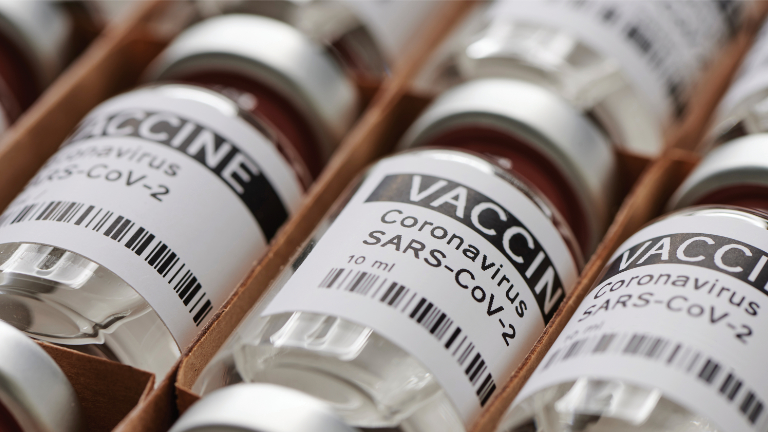Covid-19 reader: 21 January
Pandemic nowhere near over and no country out of the woods yet
World Health Organization, epidemiological update
 The World Health Organization said this week that the Omicron variant was continuing to sweep the world, with more than 18 million cases reported last week. While this represents a 20% increase on the previous week, the organisation said this marked a slowdown of the increase in case incidence at the global level.
The World Health Organization said this week that the Omicron variant was continuing to sweep the world, with more than 18 million cases reported last week. While this represents a 20% increase on the previous week, the organisation said this marked a slowdown of the increase in case incidence at the global level.
Almost all regions reported an increase in the incidence of weekly cases. The largest increase was in South-East Asia (145%) followed by the Eastern Mediterranean region (68%). At the country level, the United States reported the highest number of cases at 4.7 million, although this was similar to the previous week’s total. Closer to home, France reported just over two million new cases, representing a 26% increase. The WHO’s figures for the UK showed a 33% reduction in cases week-on-week.
However, WHO director-general Tedros Adhanom Ghebreyesus stressed that, despite Omicron cases seeming to have peaked in some countries, ‘no country is out of the woods yet’.
‘Omicron may be less severe, on average of course,’ he said. ‘But the narrative that it is a mild disease is misleading, hurts the overall response and costs more lives. Make no mistake, Omicron is causing hospitalisations and deaths, and even the less severe cases are inundating health facilities. The virus is circulating far too intensely with many still vulnerable.’
There is a particular concern for countries that have low vaccination rates. While the global vaccine-sharing Covax initiative delivered its one billionth dose last weekend, there is still a huge way to go – many countries in Africa still have less than 10% of their populations fully vaccinated.
Vaccines are less effective at preventing infection and transmission of Omicron than they were for previous variants. But they are exceptionally good at preventing serious disease and death – and continue to be the key to preventing health services from being overwhelmed, said Dr Tedros (pictured).
‘This pandemic is nowhere near over and with the incredible growth of Omicron globally, new variants are likely to emerge, which is why tracking and assessment remain critical,’ he added. While new formulations of vaccines are being developed that could more directly target the Omicron strain, Dr Tedros said he was concerned that changing the current model could lead to a ‘second and even more destructive phase of vaccine inequity’.
Clutch control needed as the NHS continues to navigate its way through Covid
NHS trust chief executive Matthew Trainer, Radio 4 Today
As the government announced plans to roll-back its plan B restrictions in England, Matthew Trainer (pictured), chief executive of Barking, Havering and Redbridge University Hospitals NHS Trust, appeared on Radio 4’s Today programme on Thursday to provide a perspective of the challenges created by the Omicron variant for NHS hospitals.
‘It’s been tough, but it’s not been as tough as we feared when we looked at the modelling back in December,’ he said. ‘If a year ago we’d seen those figures of 100,000 cases a day plus, we’d have seen that translate into significant amounts of people in hospital and lots of severe illness. And we’ve just not seen that come through in the same kind of volumes. We’ve got the vaccines to thank for that.’
He highlighted staff sickness as a key challenge, although this had peaked at around 7% in the most recent wave, compared with 25% last year.
‘Overall we’ve coped better than I’d feared six weeks ago,’ he said. ‘The numbers are now falling. The vast majority of Covid patients in critical care continue to be unvaccinated and staff absence is improving. So, I think we’ve weathered it better than I thought we might do.’
In fact, he suggested that the NHS was effectively dealing with two types of Covid – Covid among vaccinated people and Covid among the unvaccinated. ‘If you are unlucky enough to get severe illness, the vaccinations are the difference between probably a short stay on a ward with oxygen and potentially ending up in critical care,’ he said.
With additional concerns about people returning to health services after staying away in earlier waves, he said that a lot of effort had been put into planning for extreme situations. While winter still presented major challenges, it had been a relief that the vaccinations and treatments had such an impact – decoupling the volume of daily cases and the numbers that end up in critical care.
‘Changing plan B won’t change the measures we take in hospital to protect patients and visitors,’ he said. ‘So, people coming into hospital will still see staff wearing masks, wearing personal protection and using hand gels. We know how Covid spreads and we can be careful about that and will continue to be careful.’
The trust currently has about 185 Covid patients – well below its peak of 250 – with incidental Covid (people being treated for other conditions) representing about half of these cases. He acknowledged the government had to balance risks between the NHS and the broader social and economic impacts of restrictions.
There is a risk of a rebound in numbers as restrictions are lifted, but Mr Trainer remained optimistic. He said the NHS was used to dealing with winter pressures from flu or norovirus and other transmissible illnesses had been low this year, possibly due to mask wearing and handwashing. His biggest concern around any resurgence would be managing workforce issues.
‘We know this territory now after two years, we know what we need to do about it,’ he said. ‘So, it is going to be about keeping an eye on the numbers and a bit of clutch control as you just release things gradually and see what that impact is.’
Vaccinations’ unequal uptake
Office for Health Improvement and Disparities, health inequalities monitoring tool
Health inequalities are high on the agenda for everyone working in the NHS currently. However, Covid-19 has pushed the issue even further into the spotlight. While age has been the biggest risk factor, the virus has hit deprived areas and some ethnic groups harder. Systems are increasingly being given tools to help them address health inequalities in their areas. For example, the health inequalities improvement dashboard, which includes the five priority areas for narrowing inequalities in the 2021/22 planning guidance, was formally released in November.
In May last year, Public Health England (now the Office for Health Improvement and Disparities) published a Covid-19 health inequalities monitoring tool, enabling systems to look at deaths, cases, hospital admissions and life expectancy broken down by region, deprivation decile, sex and age. Vaccination data was added in August and the latest update, released this week, covers third vaccinations (including both booster and third doses).
The tool does not use real-time data and lags the daily reports on vaccinations delivered by some considerable margin – it currently only covers up to the end of November 2021. But it provides significant detail in the various breakdowns it offers.
On vaccinations, the headline figures show that, by the end of November, nearly 86% of those aged 18 and over in England had received two vaccines, while 38% had received a third dose. Some 12% remained unvaccinated.
The black Caribbean ethnic group had the lowest proportion of people to have received two vaccines – just 56% compared with 89% of white British. The tool also provides age breakdowns for ethnic groups and reveals that the group with the highest proportion still unvaccinated by the end of November was the black Caribbean group aged 18 to 29. Just over 65% of this group had not been vaccinated, compared with 17% in the Indian ethnic group, which had the lowest proportion unvaccinated in this age group.
White British people had the highest percentage of those double vaccinated across all English regions, with the exception of London, where the Indian group had the highest proportional uptake. The group with the highest proportion still unvaccinated was the black Caribbean group in London, where 44% of over-18s had not yet received a first dose by the end of November – representing only a four percentage point improvement since July.
The pattern across England is similar for triple vaccinations. The white group had the highest proportion of over-18s to be triple vaccinated at 41%. However, the lowest proportion was for Pakistani and Bangladeshi groups with 12% to 14% fully vaccinated.
Language also appears to be a factor. Just over 24% of people for whom English was not their main language (at the time of the 2011 census) had had no vaccine by the end of November, compared with 11% where English was the main language.
People who had never worked or were long-term unemployed (at the time of the census) were also more likely to be unvaccinated. Some 28% of over-18s in this group had not been vaccinated, while the proportions in all other occupation groups ranged between 14% and 7%. And the proportion of over-18s who were unvaccinated rose with each increase in level of deprivation. Nearly 19% of those in the most deprived quintile had not received a vaccine compared with 7% in the least deprived quintile.
Related content
We are excited to bring you a fun packed Eastern Branch Conference in 2025 over three days.
This event is for those that will benefit from an overview of costing in the NHS or those new to costing and will cover why we cost and the processes.